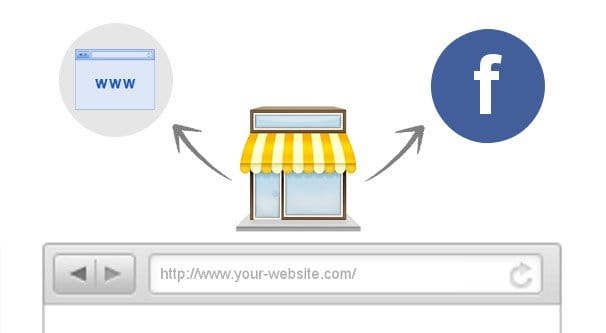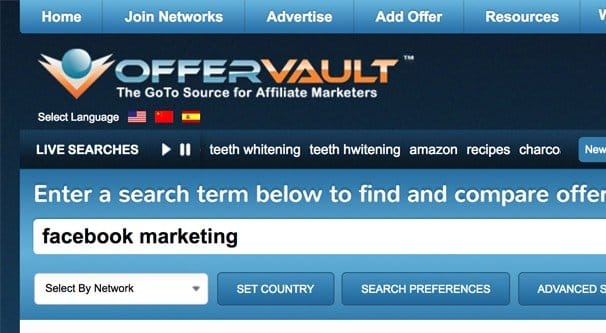 Written by ContentPowered.com
Written by ContentPowered.com
It may come as a surprise to you, but in every industry, there are three roles. There are the producers, there are the consumers, and there are the middlemen.
Sometimes the role of the middleman is clearly defined. Dropshippers and affiliate marketers have a fixed role as advertising teams for the producers. The producers don’t have to go out and do the advertising themselves; they just pay other people to do it for them. The consumers generally don’t care who is doing the advertising, so long as they get the product they are convinced they want.
In other cases, the role of the middleman is less defined. For example, reselling Facebook marketing services. You would think that the producer of the service would not want a middleman in between them and their customers. By the same token, you would think that the consumer doesn’t want to have to deal with multiple layers of support and decision making for their services. However, there’s always a way to slip through the cracks.
The key, as you might suspect, is to add value while being a middleman. No producer is going to work with you, no consumer is going to buy from you, if you’re just skimming money off the top. You need to add something to the pot to sweeten the deal.
There are three approaches to becoming a middleman and reselling Facebook and other social media services.
Approach 1: Affiliate Marketing
This is the first and most obvious means to becoming a reseller, and it’s only by the barest definition of the term that you’re still a reseller. You essentially become an outstretched partner, a lead generator, for the people actually providing the marketing services.
Let’s set up a scenario. A company is selling Facebook growth services. They set up an affiliate referral program, with a small payment for a lead and a larger payment for a successful conversion. You browse OfferVault looking for anything that piques your interest, and you find them. It’s easy from there; simply enroll in their program and get to marketing.
Now, for this approach you are just an affiliate marketer. You set up a site, run organic content and paid advertising, and generally try to attract people to your site and get them convinced that they need Facebook marketing services. You aren’t providing those services, and you’re not even pretending that you’re the one providing them. You simply link to the people actually providing the service, and when your referred traffic converts, you earn a payment.
There are two drawbacks to this plan. First and foremost, it’s not going to earn you as much money as the other methods of reselling services. Affiliate marketing can be lucrative, but it’s also a fairly saturated industry and it’s difficult for anyone to make it big, regardless of industry.
Second, you don’t really get to build up a brand of your own. You’re not claiming to be selling the services yourself, and due to the way affiliate marketing works, you can’t even hide the fact that someone else is doing the fulfillment. You’re just a middleman, everyone knows you’re a middleman, and there’s a limit to the amount of growth you can achieve.
You can bolster your earnings by approaching various Facebook marketing firms directly, at least. Many of them are struggling to find new clients, or are at least always on the lookout for new clients, but they don’t have affiliate offer programs set up. You can forge a more specific, more lucrative deal with them by approaching them directly and offering. Many won’t take you up on it, but a few will, and all you really need is one good service provider willing to pay.
Approach 2: Full Partnership
This second approach goes in the full opposite direction, and is actually more like digital dropshipping than it is affiliate marketing. It works like this.
First, you decide on a target. You need to find a firm that offers the right kind of services that you want to pitch, to the right kinds of clients, and at sufficient volume. mThis will be tricky, because the service provider needs to meet several specific criteria.
- They need to offer the services you want to offer with your partner business.
- They need to work with clients on the same scale you want to work with. You can contract an enterprise-level firm working with Fortune 500s and offer them a few dozen small business clients, it simply isn’t worth their time for such low volume.
- They need to have the ability to work with as many clients as you can send their way. If they’re at their maximum capacity, it doesn’t matter how good of a salesman you are, you won’t be able to actually sell their services.
- They need to be willing to strike up a reseller deal. Some companies want nothing to do with this, and it all depends on which is more important to them; reputation or money. If they’re in it for the money, they’ll take whatever you want to give them. If they’re in it for the branding, they won’t want to do work for your clients without the reputation to go along with it.
- They need to be within a price range you can afford. If the supplier is selling their services for $50 an hour, you need to be able to make a profit in some way. Either they have to offer to sell to you for $40 an hour, and you market the service at $50 an hour, or you simply need to market the service at $60 an hour. Usually, a combination of both is ideal, so you get wider profit margins both ways.
Additionally, it’s ideal if you can do at least some of the work yourself, so that some of the ultra-small clients you handle can be knocked out by your own services without the hassle of referring them to your primary provider.
The benefit to this approach is in branding and in profit, primarily. You get to pass off the services you sell as your own, and refer to a “team of specialists” working for you, even if the reality is a little different. Everyone gets paid, everyone gets their services, and it all works out in the end.
The downside here is that you need to find these very specific service providers and strike up that deal. The perfect company might exist, but if they aren’t willing to strike up a partnership with you, your business goal goes nowhere.
You do also have the benefit of potentially being able to front for multiple companies. If you have an enterprise-scale company willing to work with you, a couple of mid-size companies, and a handful of small-scale companies, you have a lot of potential sources of the work you sell. Whenever a new client comes in, you can judge the size of their brand and the scale of their needs, and sell them the service package best suited to them.
In this way, you sort of become a marketplace, though not a transparent one. That’s actually another idea you can run with; a marketplace hooking up the service providers with the people seeking those services. That’s another form of marketing altogether, though, so it’s not something I’m digging in to here.
Approach 3: Aggregated Value
The most common approach, as far as I’ve seen, is the aggregated services approach. It’s more work for you, but has the potential for much higher profits, and makes your brand a great hub for a wide range of services.
Essentially what you do is build your brand as a hub for as many services as you can find ways to provide. You do this with an array of deals made with service providers and tools you either purchase or develop for the task.
For example, you might make your brand a general marketing brand, and offer things like:
- Partial Facebook ad management, provided by a Facebook ad management company you make a deal with.
- Total Facebook profile management, provided by a more robust Facebook management company you deal with.
- Facebook organic content marketing, provided by your own in-house team – that is, you – using a tool like Edgar.
- General social content management through a dashboard with analytics and content scheduling tools, provided by a resold whitelabel version of Sendible.
- Provide basic automation by managing inputs and outputs with IFTTT and your clients’ user information where necessary.
And so on. The idea is that your customers wouldn’t be able to get everything you provide to them in one place, at least not without finding a more expensive custom solution. You provide all of these modular services and tools, some of which are self-serve, and you add value by managing some of it yourself, by hooking up customers with special discounts from your partners, and so forth.
The goal here is not just to provide everything as-is. After all, if a company wants a Sendible dashboard, access to Edgar, and a small-sale ad management team, they can do all of that themselves. You need to help out along the way, by providing special deals, extras, and assistance. Like I said, it’s going to be more work for you, but with the potential for more profits.
Generally, you will want a setup where you have a small handful of free tools, generally developed yourself and cribbing off of existing free tools, to hook users. You then upsell them into your basic, low cost services, possibly even taking a loss on the assumption that upgrades will bring in the profits. You can make everything modular, so people can pick ala carte what they want for their brand, and you can provide these custom packages.
The primary power of this course of action is flexibility. You can always make more deals, provide more tools, and expand your services. As long as you’re capable of funneling traffic where it needs to be, you have the power.
Your role in all of this is to be a facilitator. You’re there to make sure everyone is getting what they’re paying for, and to get them to pay for more so you can expand the reach and profitability of your business. As you grow, you can put logos of the companies you’ve worked with on your site for social proof, and you can leverage your number of clients and your revenue numbers to help make deals with higher scale service providers who might not want to deal with people who don’t meet certain thresholds. The sky is the limit; you can expand as much as you can handle.
In fact, once you reach a certain level of growth, you can even hire other people do to the intricate management for you. At some point, you can start devoting all of your time to expanding your services and making new client connections. You don’t have to touch the day to day at all, and can devote some of your energy to establishing another brand or business.
Just make sure you’re providing something of value to both sides of the coin. It’s easy to provide value to customers; the tools and services they want are still valuable regardless of whether they buy them through you or through the company you’re reselling. Maybe you’re offering a special deal or a value-add to enhance sales, but it’s still at its core the same thing. So what’s to stop the service providers from working around you and making deals directly? You need to have additional value for them as well. Some will simply consider the influx of clients to be value enough, while others might expect something else in return. That, though, comes down to the deals you’re capable of making.
Reselling has a lot of potential and seems better than direct deals or affiliate marketing, so what’s the catch? Really, nothing more than the work involved. It’s going to require setup, proactive deal making, and a steady influx of new clients if you want to succeed. Partnerships don’t work if you aren’t referring clients to keep it alive.



